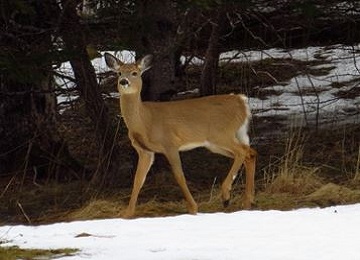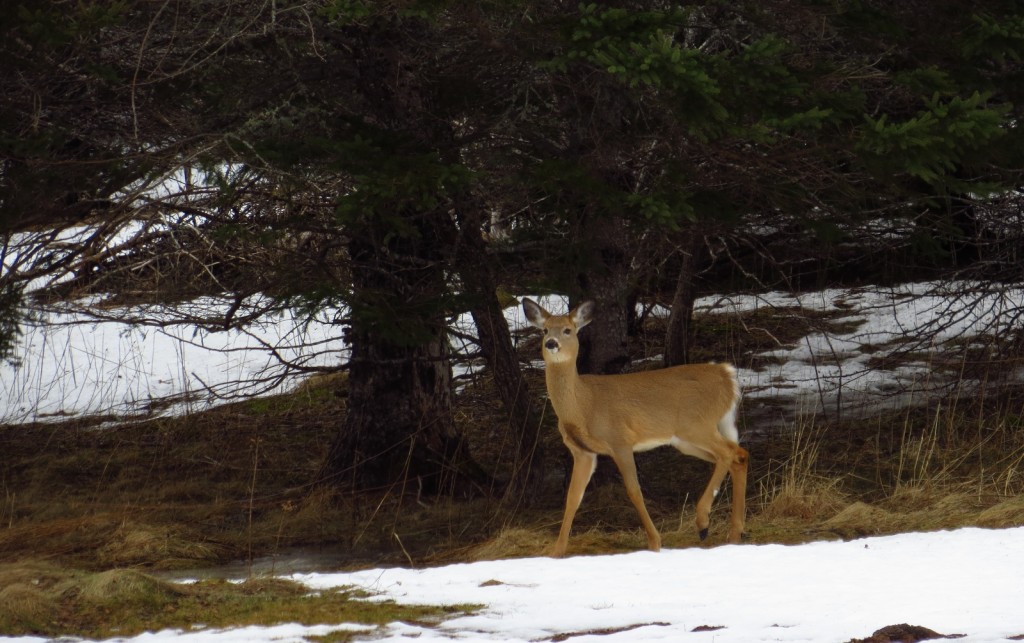
White-tailed Deer (© Magi Nams)
At the edge of Nova Scotia’s spring, a wild north wind sends treetops shuddering, and sunlight in clear blue sky reflects off snowdust, bathing our yard, meadows, and woods with brilliant light. Vilis and I live away from roads, tucked back against a successional forest, looking out over parkland and down to a brookside meadow. It’s good country for white-tailed deer, and we see many of them.
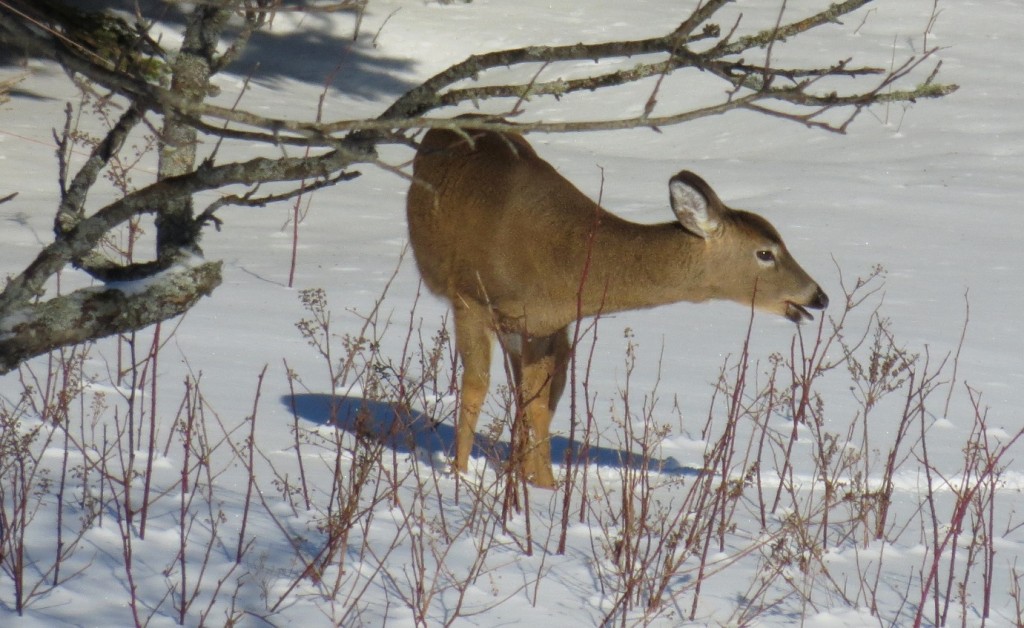
White-tailed Deer Feeding on Blackberry Canes (© Magi Nams)
Primarily browsers, white-tailed deer tug off twigs and buds of both evergreen and deciduous trees and shrubs in winter. I’ve even seen them feeding on thorny blackberry canes. Because they have no upper front teeth, they can’t make a clean snip like hares and rabbits do, so yank off their food, generally leaving tattered edges. With the snow quickly disappearing, the white-tails are also feeding on exposed patches of grasses and herbs.
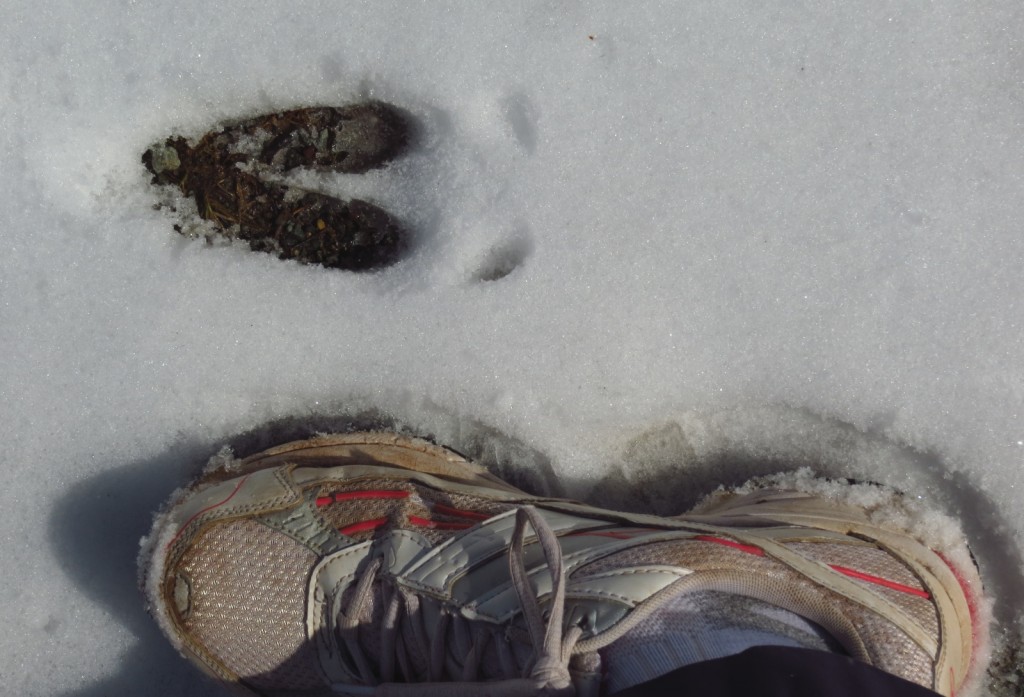
White-tailed Deer Track (© Magi Nams)
Snow makes it easy to follow deer tracks, revealing regular trails the white-tails use through our property. This winter, I’ve observed lone deer, a family group consisting of a doe and her fawns from the previous year, and small herds of five or six deer traveling and foraging together. As well, while driving in winter and early spring, it’s a common sight to see deer feeding in open fields. Such is not the case during fawning and hunting seasons, when deer are much warier than they are now.
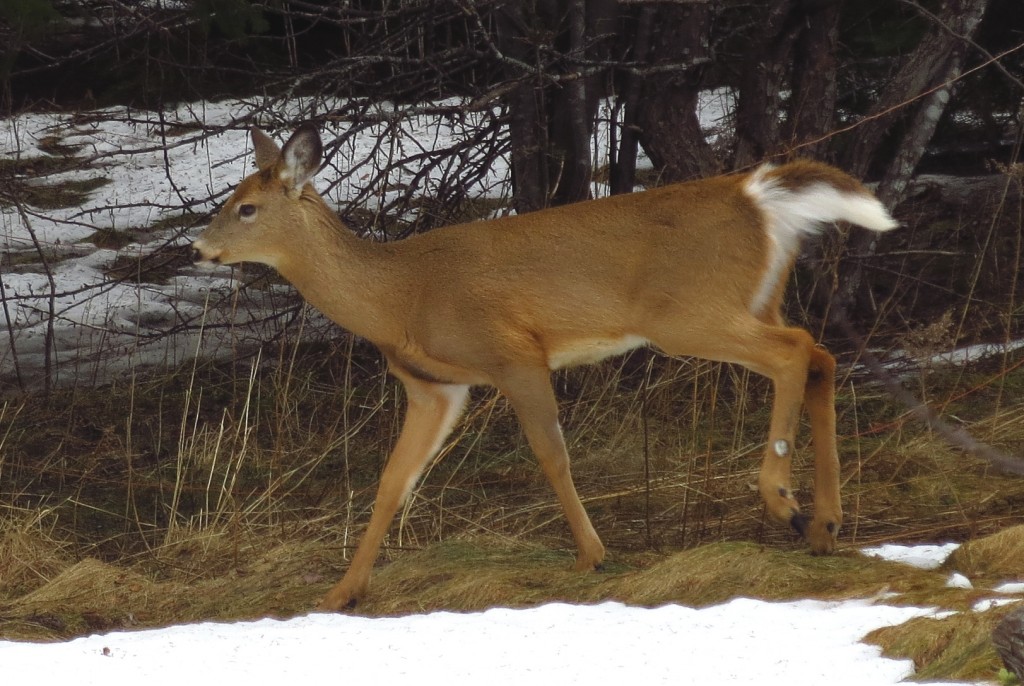
White-tailed Deer (© Magi Nams)
When a white-tail becomes aware of a potential threat, it lifs its tail, revealing the white underside. When fleeing from danger, it holds the tail straight up and may flick it from side to side. That’s definitely an attention-grabber. Sometimes my first sight of a deer is of it bounding away with tail held high. This flagging behaviour is thought to deter attacks by making predators aware that they’ve been seen, so there’s no point in wasting energy on an attack.
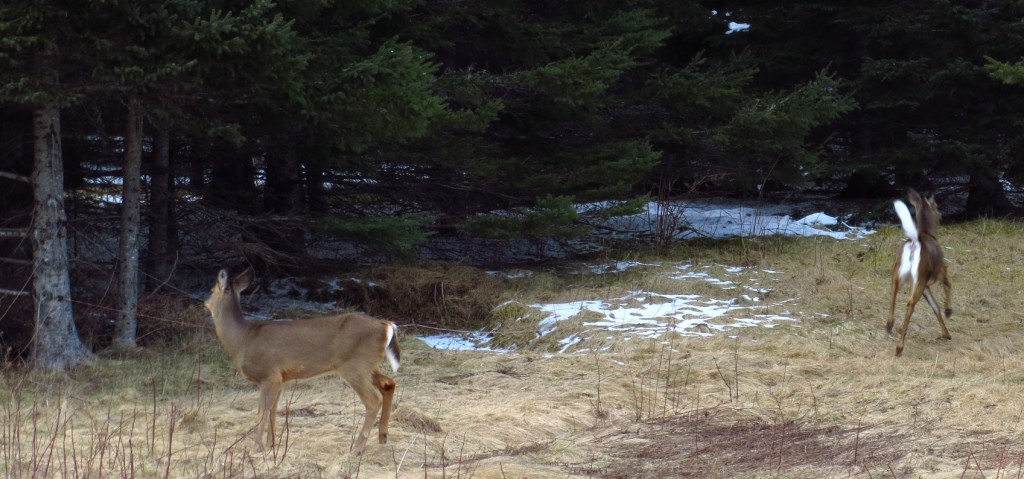
White-tailed Deer (© Magi Nams)
I frequently see deer feeding at the edge of our yard or on the lawn. Unfotunately, this means that I inevitably find their feeding sign on my young fruit trees, berry shrubs and canes, (and tulips, roses, and lilies in summer). For much of the year, we run an electric fence around our yard to repel these beautiful pests, and I also spray vulnerable plants with a blood-based deer repellent called Plantskydd, which seems to be effective but requires re-application every couple months. Every prize has its price, and an abundance of deer and black flies are two prices we pay for our prize of living in northern Nova Scotia.
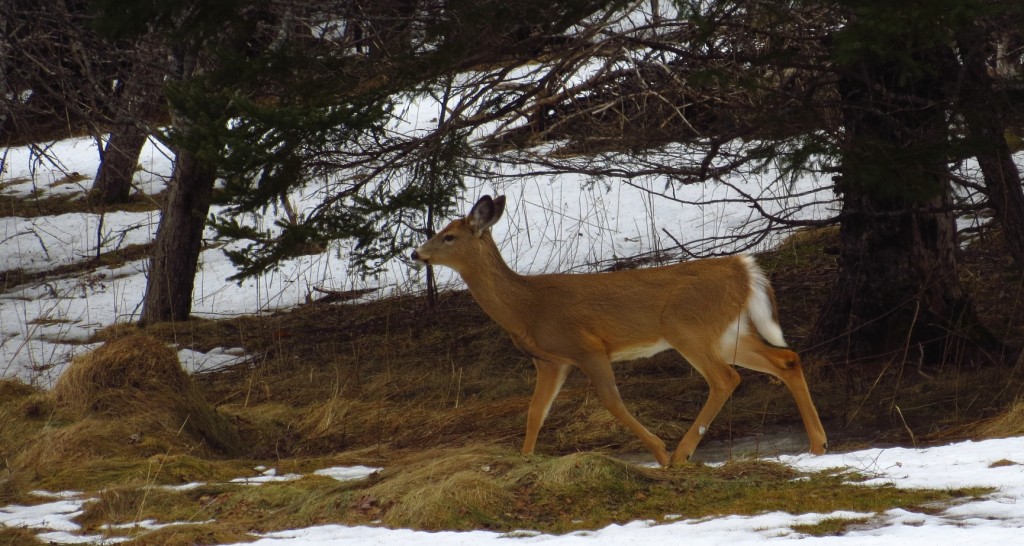
White-tailed Deer (© Magi Nams)

